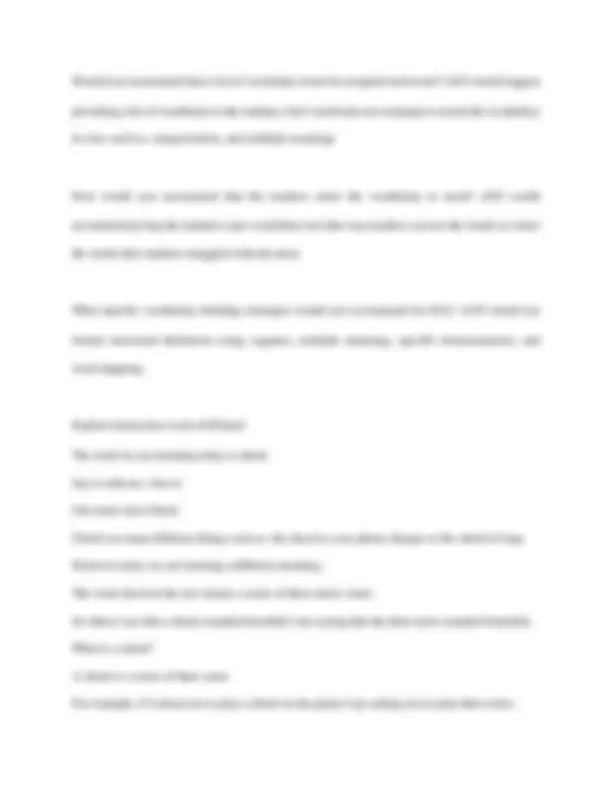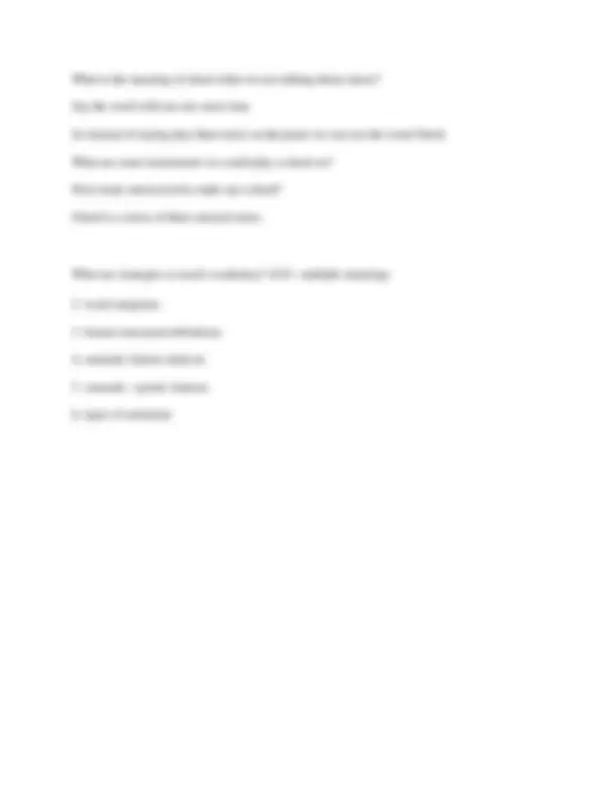




Study with the several resources on Docsity

Earn points by helping other students or get them with a premium plan


Prepare for your exams
Study with the several resources on Docsity

Earn points to download
Earn points by helping other students or get them with a premium plan
Community
Ask the community for help and clear up your study doubts
Discover the best universities in your country according to Docsity users
Free resources
Download our free guides on studying techniques, anxiety management strategies, and thesis advice from Docsity tutors
What is vocabulary? ✔✔Knowledge of and memory for word reading Receptive Vocabulary ✔✔what we understand when we hear or read words (what they understand) Expressive Vocabulary ✔✔words we use to speak and write (what they defend) What is the four part processing model of word recognition? ✔✔1. Context processor 2. Meaning processor 3. Phonological processor 4. Orthographic processorWhat is vocabulary? ✔✔Knowledge of and memory for word reading Receptive Vocabulary ✔✔what we understand when we hear or read words (what they understand) Expressive Vocabulary ✔✔words we use to speak and write (what they defend) What is the four part processing model of word recognition? ✔✔1. Context processor 2. Meaning processor 3. Phonological processor 4. Orthographic processor
Typology: Exams
1 / 4

This page cannot be seen from the preview
Don't miss anything!



What is vocabulary? ✔✔Knowledge of and memory for word reading
Receptive Vocabulary ✔✔what we understand when we hear or read words (what they understand)
Expressive Vocabulary ✔✔words we use to speak and write (what they defend)
What is the four part processing model of word recognition? ✔✔1. Context processor
Strategies to teach ELL students new vocab? ✔✔Demonstrations and prior knowledge
How many times does a student need to hear a word before they know its meaning? ✔✔must be
exposed 10 to 12 times
how many words should be taught per week/ ✔✔10 words per week
what are three things to promote vocabulary growth? ✔✔1. morphology
What are two ways NOT to teach vocabulary? ✔✔dictionary and worksheet
Teachers should teach what tier? ✔✔Should teach tier 2 words because of comprehension
Superordinate ✔✔main heading
suberordinate ✔✔categories
Besides Tier 2 teachers should also teach what words? ✔✔content specific and tier 3 words
What do you do to clarify the meaning of a new word? ✔✔look at structural and textual analysis
what are ways to promote oral language development? ✔✔picture activity
What are the domain specific words/ ✔✔Root, Triad, chord, appoggiatura, auxiliary
Franconian, long, breve, notes, mood, triple, duple.
What is the meaning of chord when we are talking about music? Say the word with me one more time So instead of saying play three notes on the piano we can use the word Chord. What are some instruments we could play a chord on? How many musical notes make up a chord? Chord is a series of three musical notes.
What are strategies to teach vocabulary? ✔✔1. multiple meanings